The house I purchased a few years ago is on sloping ground and between the house and the tarmac road was a gully which the previous owner, a contractor, had filled with trash. (Not as bad as contractors digging holes for landscaping dirt for a new house and then filling with tree trunks, which results in sinkholes, anguish and expense for home owners.) I tried clearing the trash myself with trips in my pickup to the recycling center but made little progress. I did not have my bobcat at the time and so I engaged a contractor who removed several dump truck loads of trash and then filled in the gully with more dump truck loads of soil. And so I had a bare slope to work with. And I made a number of mistakes.
My initial steps, with hindsight, were ok. I cut down a big pine, delimbed it and positioned it diagonally about halfway up the slope. At its bottom end I constructed a french drain. The idea was to divert rainwater streaming down the slope to the drain and prevent erosion of the slope. There has been no erosion, so this probably helped.
Next, to populate the slope, I ordered various hardwoods from the South Carolina and Georgia forestry commissions. The price is reasonable when you order at least 10 trees of a kind, and ever cheaper as your order increases from 50 to 100 to 500 to 1,000. For a large tract this is the way to go. For my smallish area not the best solution. Most of the seedlings arrived in January and February. A better time to plant would have been in September and October when the roots could have established themselves before the cold weather. The seedlings were shipped bare root and some had minimal side roots just a large severed tap root. More side roots would have enabled the seedlings to establish themselves more quickly. Some of the items I liked were out of stock and so I did not have the variety I wished for.
So what should I have done? Simple, just pick the acorns of the red and white oaks in the nearby woods and the nuts of the hickories, bury them in the ground alongside my vegetable plantings and then plant them on the slope a year later. This is what I did a few years later and had excellent results. By planting the nuts in the vegetable garden they were guaranteed ample watering, good sun exposure and good soil. And the good soil had another bonus. When I forked out the seedlings for replanting on the slope, because the ground was soft (and wet) most of the roots were intact, including the tap root. And these seedlings were from my area and so are well adapted to quickly populate the slope. Had I initially gone this route I apparently would have lost a growing season but the purchased seedlings took a long time to get going and I expect that my own seeded local sourced trees will grow at a faster pace.
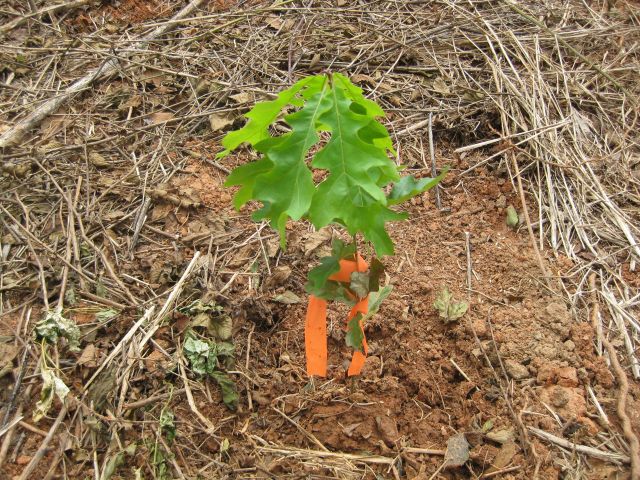
When I planted each seedling I dug out a good sized hole and filled it with a mixture of soil and my home made compost and watered well, following the adage “dig a $10 hole for a $1 plant”. Not a good idea – there were large trees bordering the slope and their roots immediately headed for the newly introduced nutrients and moisture. So I burdened the newcomers with fierce competition. I probably should have introduced them surreptitiously, below the radar.
Other mistakes. After the slope was graded in the fall, I seeded with hairy vetch and clover and they took off well and helped combat erosion and added nutrients (nitrogen) to the ground. This was fine. But in following years I was focused on my edible plantings elsewhere and ignored the slope and it was invaded by brambles and brier which displaced my ground cover and competed with my tree plantings for moisture, nutrients and sun. In their excellent 2 volume book “Edible Forest Gardens” the authors (Jacke and Toensmeier) interview Martin Crawford, U.K. author of the equally excellent “Creating a Forest Garden” and on several occasions he stresses the importance of controlling brambles. He notes “very important – I have seen forest gardens taken over by these.” Well, I took my eye off the ball and the brambles completely took over, reaching heights in excess of 10 feet.
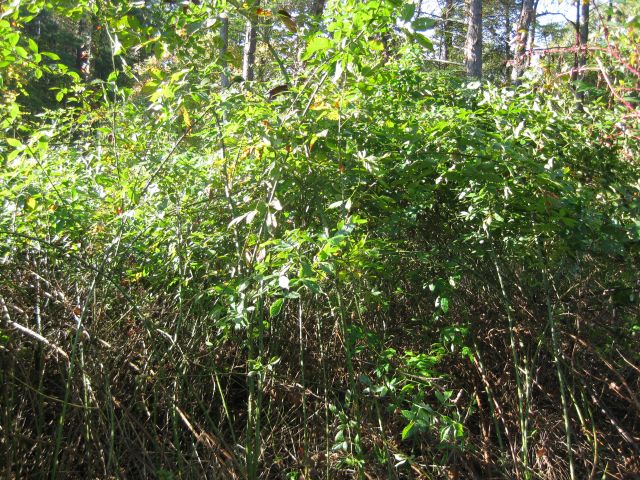
The past few weeks as I dug out the invader I became acquainted with its strategies. It has strong lateral roots which grow just below the surface and then pop up to establish new plants.
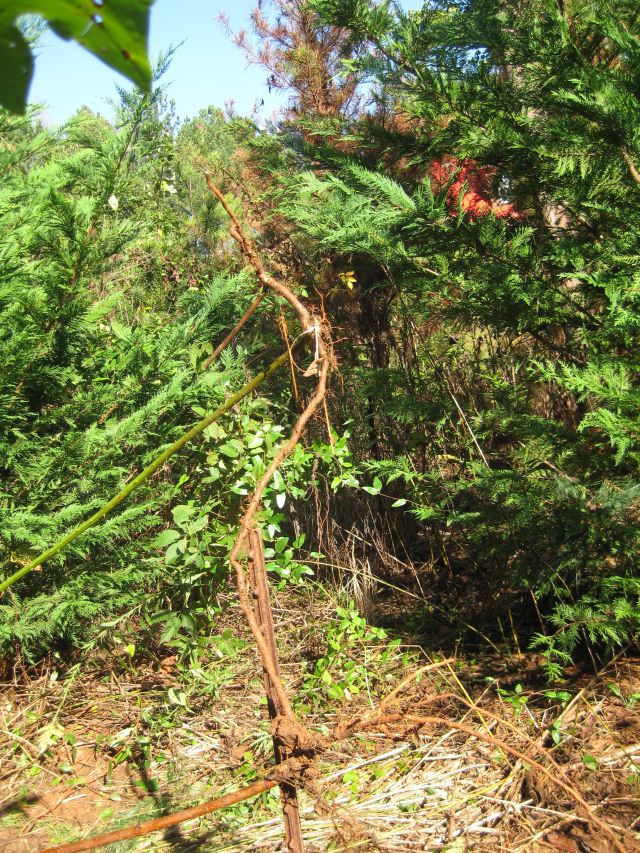
Also in winter the cane dies back and in spring a new cane emerges from the same base, so it is common to see a thin brown cane (previous year) and a thicker new green bramble cane for this year.
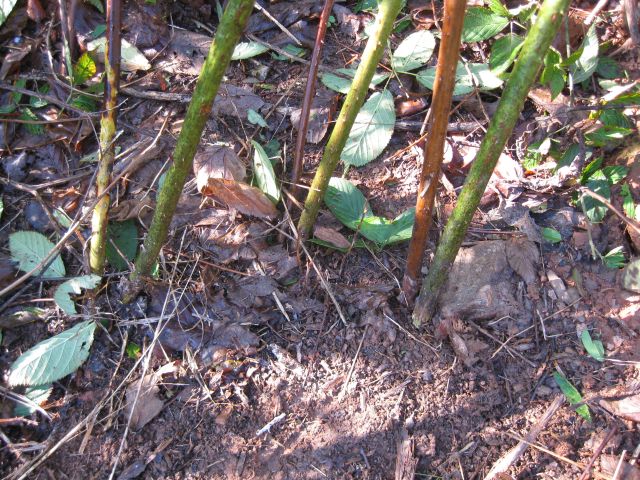
The reason for increased diameter is not just because the old cane is dried out – the new cane can grow bigger because it is starting with the root base established by the previous year’s cane.
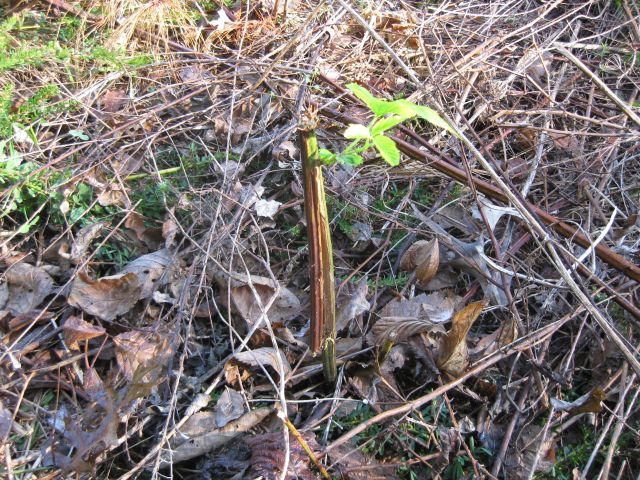
Just as I have been digging out bermuda grass in my berry planting area so am I committed to clean up the slope and release the hardwoods so they can grow vigorously and outshade their competitors which also include some tough rooted 2 foot grasses. It needs continuous attention and hard work to help the favorites outcompete the bramble and allied invaders.
